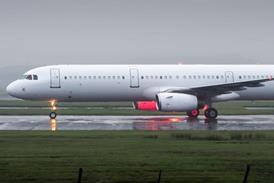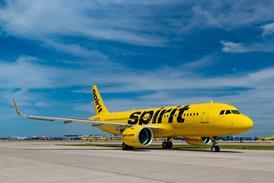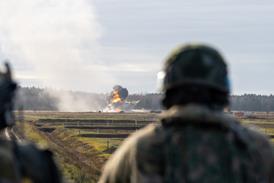Manufacturers face new narrowbody challenges in the mid-thrust range
Civil propulsion pundits are scratching their heads in the wake of Farnborough 2004, where there were mixed signals for engine makers in the hard fought mid-thrust market.
The good news was the emerging consensus that Airbus and Boeing are blowing the dust off their computer screens and are starting to consider new-generation narrowbody designs for the 2010-12 timeframe. Not only that, but Bombardier announced a higher than expected thrust requirement for its new CSeries airliner, which potentially provides fresh impetus at the bottom end of the same 20,000-30,000lb-plus (90-135kN) power range.
The bad news is that Bombardier's plan calls for a new engine almost immediately. New Commercial Aircraft programme vice-president Gary Scott says: "We require an engine to be certificated by 2008, and we intend to select it by the end of this year." Bombardier integrated product definition and planning executive vice-president John Holding says the 21,000-23,000lb-thrust engine must be brand new and state-of-the-art. "There isn't an engine out there that exists at the moment that will meet our requirements," he insists.
But it is not only the timing of the Bombardier plan that brings the strategists out in a sweat, it is also the power range. Assuming the long-term thrust requirements for successors to the Airbus A320 and Boeing 737 families stay in the 23,000-35,000lb range projected, the sudden appearance of the CSeries at the bottom end of this range presents an agonising dilemma. Do the engine makers compromise and design a new centreline engine that can appeal to all three potential families or do they adopt a stepping-stone approach and use the lower-thrust engine as a platform for development of the next family? Or do they do neither and simply concentrate on exclusive offerings for both thrust requirements? All depends on cost and whether or not the relatively niche market of the CSeries justifies the risks.
Some of the questions may have already been answered by International Aero Engines (IAE). Its relatively new president Mark King appears bullish on the CSeries and the next step for the V2500. "We have drawn down a number of configurations and over the past few months that activity has increased," says King. The Bombardier project is "the first one we can see in sharp focus. We have started negotiations with Bombardier, and our shareholders are supporting the V2500 as our route to market. We see it as a positive development towards the next generation of V2500 family."
King's comments effectively forestalled mounting surprise over the news, that very same morning, that IAE partner Pratt & Whitney would not be offering the PW6000 for the CSeries, and had specifically singled out the V2500 as its way forward for the next generation. With the PW6000 apparently sidelined and sent out in search of more exotic roles as an engine for future military transports and unmanned systems, King's statement also seemed to answer the same questions over Rolls-Royce's advanced two-shaft project.
Revealed this year as R-R's pathway to future requirements in the 7,000-30,000lb-thrust range, the turboshaft engine project appeared to be aimed at the Bombardier study, along with variations of the BR700. In light of King's comments, it seems the results of R-R's core work, which will begin with tests of a new nine-stage high-pressure core in 2006, will be refocused towards the IAE solution or other requirements.
General Electric and Snecma, partners in CFM International, both appear at this stage to be agreeing a similar approach. Although the Saturn/Snecma SM146 powerplant for the Russian Regional Jet and the GE CF34-10 offer potential growth paths to meet the Bombardier requirement, CFMI president Pierre Fabre says: "You are not going to see a GE or Snecma engine, but maybe a CFM."
Noise problems
Even so, CFMI faces the major dilemma of how to deal with the vastly different timescales of the new projects. Will it propose a fast-track, hybrid Tech56-based solution for the CSeries and stay focused on the higher-thrust "sweet spot" for a longer- term, next-generation Airbus and Boeing? "We just don't know," says Fabre.
For the moment, CFMI is tied to its newly revealed game plan, aimed at a new centreline engine for service entry from 2012. This is based on guesswork when it comes to Boeing's plans for its "Y-1" new-generation narrowbody and Airbus's A320 follow-on, but CFMI executive vice-president Bill Clapper says noise regulations will be a major influence.
The projected need will be a "25dB cut with today's reliability, which is a huge challenge", says Clapper. Whatever the answers, it seems appropriate CFMI should tackle the conundrum of its next generation as it celebrates its 30th anniversary.
GUY NORRIS
Source: Flight International























